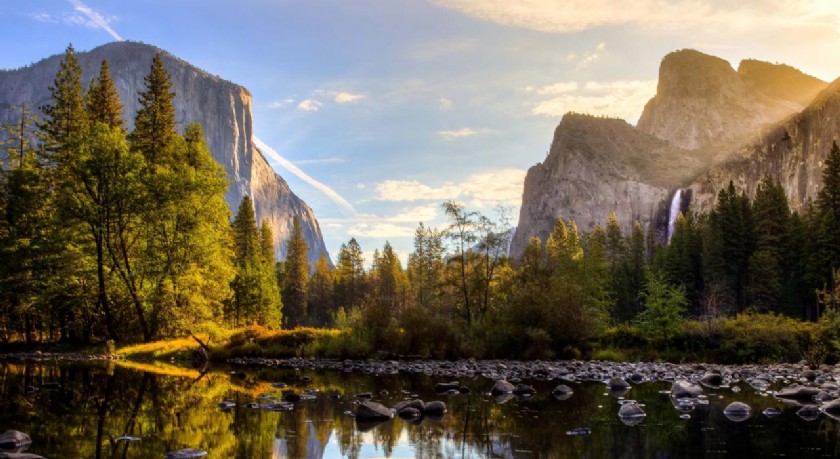Yosemite Valley, located in California, is known for its breathtaking natural beauty and iconic landmarks. This magnificent valley experiences a diverse range of weather conditions throughout the year, making it a year-round destination for outdoor enthusiasts and nature lovers.
Seasonal Weather Patterns
Yosemite Valley's weather is heavily influenced by its elevation, which spans from approximately 2,000 to 8,000 feet above sea level. As a result, the valley experiences distinct seasons with varying temperatures and precipitation.
Spring (March to May)
During spring, Yosemite Valley witnesses a beautiful transformation as wildflowers bloom, and the surrounding areas burst with vibrant colors. Daytime temperatures start to warm up, ranging from the mid-50s to low 70s Fahrenheit (13-23 degrees Celsius). Nights can still be chilly, often dropping to the 30s and 40s Fahrenheit (0-9 degrees Celsius). Rain showers are common during this season, so it's recommended to pack a raincoat or umbrella.
Summer (June to August)
Summer in Yosemite Valley brings warm and dry weather, perfect for exploring the numerous hiking trails and iconic landmarks such as Half Dome and El Capitan. Daytime temperatures average in the high 80s to low 90s Fahrenheit (around 30 degrees Celsius), occasionally reaching the 100s Fahrenheit (above 37 degrees Celsius). Nights are usually mild, with temperatures in the 50s to 60s Fahrenheit (10-15 degrees Celsius).
Fall (September to November)
Fall in Yosemite Valley is a sight to behold, as the surrounding foliage turns into stunning shades of red, orange, and gold. Daytime temperatures gradually begin to cool down, ranging from the mid-60s to low 70s Fahrenheit (18-23 degrees Celsius). As the season progresses, nights become progressively colder, often dropping to the freezing point or slightly below (32 degrees Fahrenheit or 0 degrees Celsius). It is advisable to bring layers and warmer clothing.
Winter (December to February)
Winter in Yosemite Valley offers a completely different experience, as the valley transforms into a winter wonderland. Snow blankets the landscape, creating a breathtaking scene. Daytime temperatures can range from the 30s to 50s Fahrenheit (-1 to 10 degrees Celsius), while nights are significantly colder, often reaching below freezing. Snowstorms are frequent during winter, so it's important to prepare with proper winter gear and check for road closures before visiting.
Weather Safety and Preparedness
Regardless of the season, it's essential to be prepared for sudden changes in weather conditions during your visit to Yosemite Valley. Here are some tips to ensure a safe and enjoyable experience:
- Check the weather forecast before your trip and be aware of any potential storms or extreme conditions.
- Layer your clothing to adapt to changing temperatures throughout the day.
- Carry sunscreen, hats, and sunglasses during summer to protect yourself from the intense sun.
- In winter, dress in warm, waterproof layers and wear sturdy boots suitable for snowy and icy conditions.
- Stay hydrated and bring ample drinking water on hikes, regardless of the season.
- Follow all park rules and regulations, especially during inclement weather.



 623
623